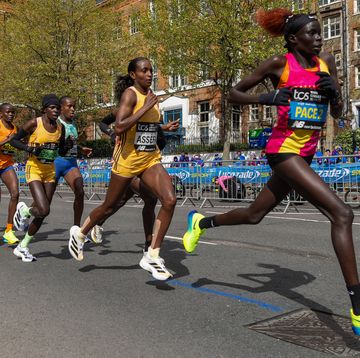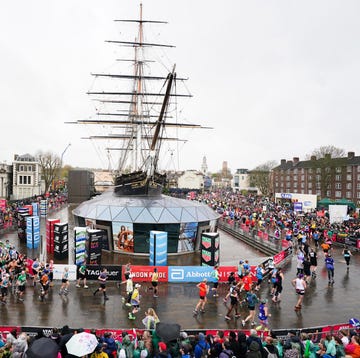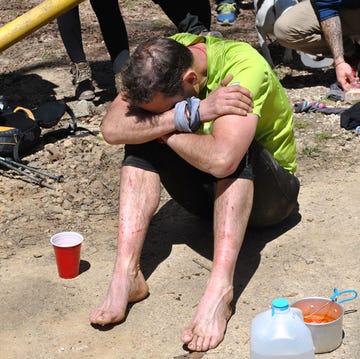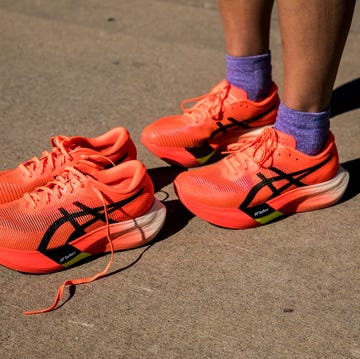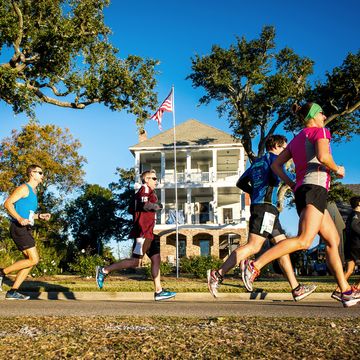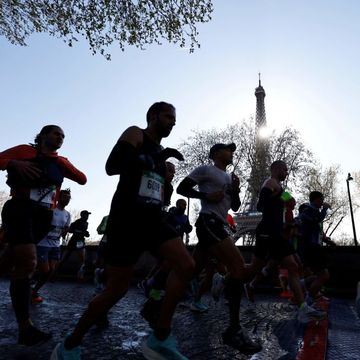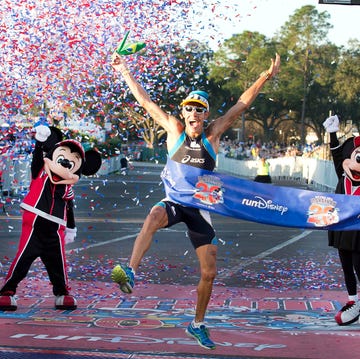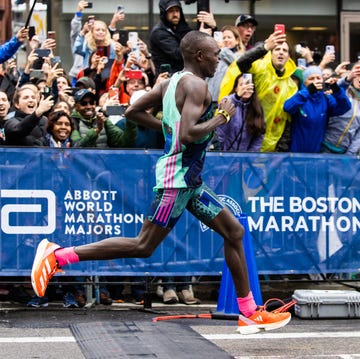After training for four months (and preparing all year), I lined up last weekend at the start of an unseasonably warm Marine Corps Marathon, went out strong and well paced, and somewhere in the second half completely fell apart.
Whatever the opposite of a PR is, that’s what I earned. It was my Personal Worst. I came in 45 minutes slower than my goal time, and nearly 30 minutes slower than any marathon I’ve ever run before.
What happened? I wasn’t being realistic.
Earlier this year I started dealing with an ankle injury that I had hoped was over. Though my last few long runs were difficult, they were also doable—but I was running slowly, and I could feel the injury, especially in the final miles.
Despite that, I still decided to make a goal of trying to PR. I thought my ankle was strong enough to handle a relatively speedy pace—or that I could make it most of the way before it became a real issue. I was wrong.
I also ignored the warnings that the weather would be very warm. I had been training all summer in the heat, and felt over-confident about being able to run well despite hot, humid temperatures. As a result, I didn’t hydrate enough. So I ended up nauseous and cramping as well as injured.
I started out strong. I kept a solid, even pace for 13 miles, and was right on target. I was proud of myself for sticking to my plan, and keeping it dialed back in the early miles, when I longed to just bolt.
That feeling of wanting to run faster passed, and I soon settled into my pace pretty comfortably. After mile 13, however, I could feel myself starting to struggle. So I decided to back off my pace by about 15 seconds. “I may not PR,” I reasoned, “but I’ll still finish strong, and can be proud of that.”
At mile 15, still struggling, I decided to back off my pace by another 30 seconds.
By mile 16, I had fallen apart. First my right ankle started throbbing, and then my left started throbbing as badly, which was new. Within minutes my calves began cramping up, and I started feeling severely nauseous.
I slowed down to a crawl, but it was no use. I stopped. I stretched out my calves and tried to run again. After half a mile, I slowed to a walk. For about four miles I alternated between jogging and stretching out/walking, but the throbbing in my ankles became too painful to ignore.
By mile 20 I just started walking and trying not to retch. I gulped down several cups of water at the last couple water stations, which only made things worse as the liquid sloshed around in my belly.
All around me, runners were walking. Fans kept trying to cheer us up and cheer us on. “You can do it!” they yelled. “You’re almost there! You’re looking great! Just keep running!”
Mile 20? I was not almost there. Not by a long shot. I couldn’t keep running. And I didn’t have a mirror, but I’m pretty sure I looked like fresh death.
When you’re struggling to keep your pace in the final miles of a marathon, cheering crowds and thumping music can be intensely motivating. But when you’re injured, when you’ve made the decision to give up and are just trying to make your way to the end, there’s almost nothing worse. Every step of that last ten kilometers was hellish.
Soon pace groups much slower than my worst imagined time began to trot by. I honestly didn’t even know I could finish a marathon this slowly. “This is embarrassing,” I thought. “Is it even worth it to keep going? Maybe I should quit.”
I did keep going. Partly this was because I work here at Runner’s World, and I knew that I’d have to come back and write this article. The only thing more embarrassing would be fessing up to a DNF.
I also completed it because I actually did drop out of a race once—before I began working here. I dropped out at mile 20 of my second marathon. Though I felt similarly awful that time, I don’t think I moved as slowly as I did during this race. And I spent the entire year afterward feeling horrible about it and second-guessing myself.
I also completed the race—seriously—because it was one of my goals. A few weeks ago I wrote about my four main goals going into the marathon. They were (in order): to try to PR, to try for negative splits, to finish the race, and to see the Washington Monument.
The first two, of course, went out the window. But even at my worst, aching all over and incredibly dispirited, I knew that if I could just drag myself over the finish line, It would be an accomplishment. Even if I couldn’t exactly feel proud of myself, at least I wouldn’t be as disappointed.
As for that last goal? Check out the photo at the top of the article. It was a pretty gorgeous weekend, all else aside.
I know that I’ll be back at it again, before long. One of the things I love (and hate) about marathons is how tremendous they are. You spend (if you’re me) all year getting ready for a big race, and then you have just one day to try to get it done. The risk is huge, but so is the reward. Plus, there’s always next year. It has to be better than this one, right?
* * *
Christopher Michel ran the 2016 Marine Corps Marathon with Runner’s World VIP. He also failed at his secret fifth goal, which was to eat a chili dog. But he did have a pretty fantastic soft pretzel, which counts.



